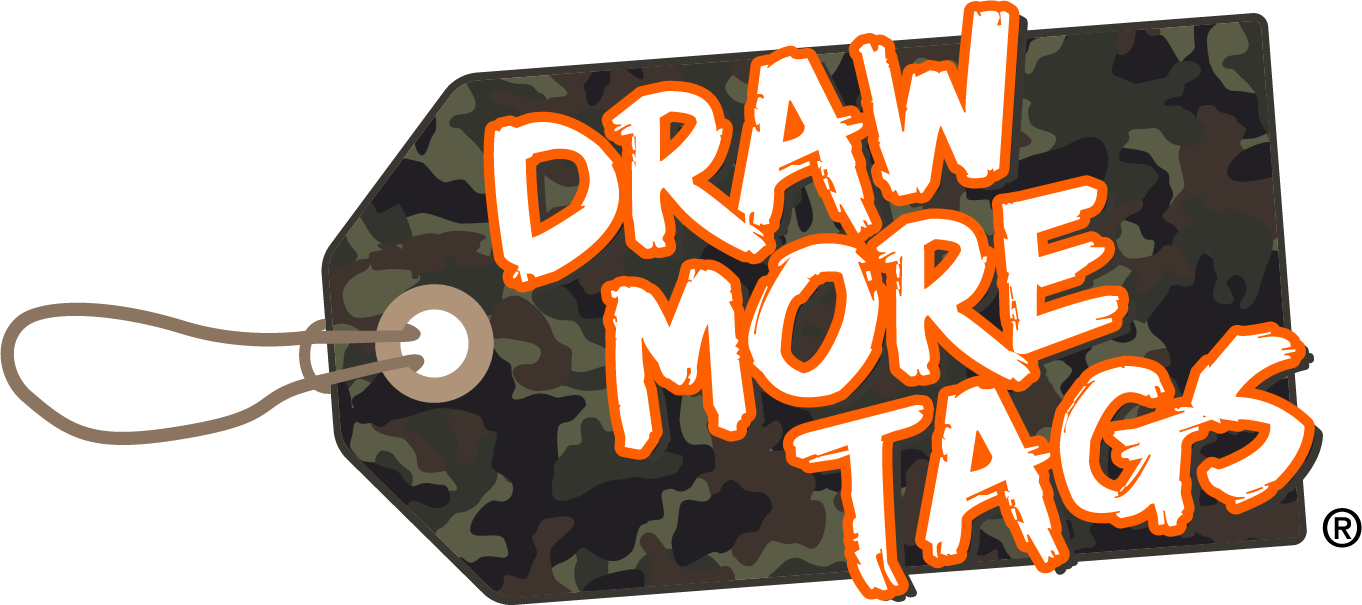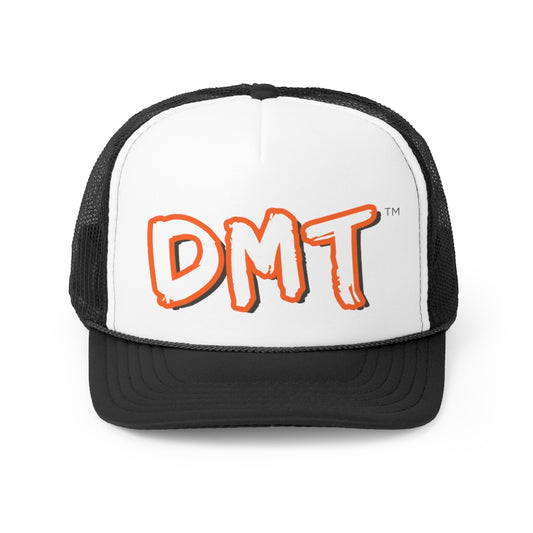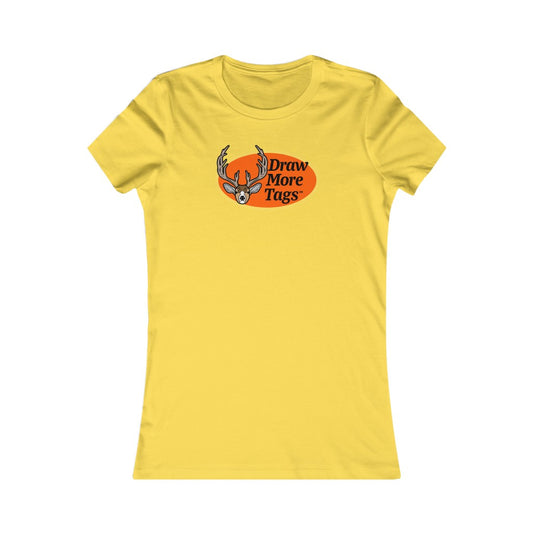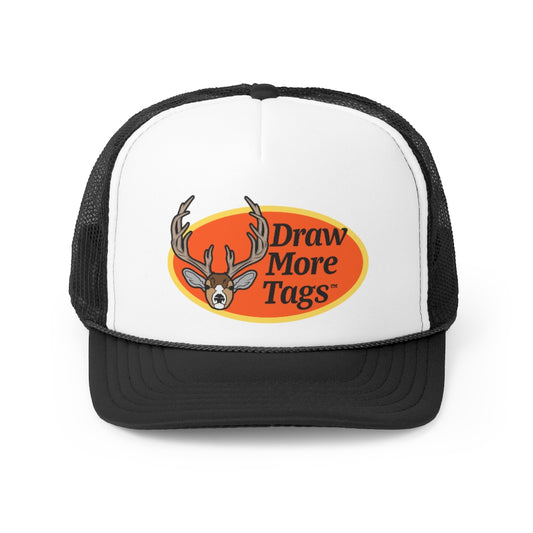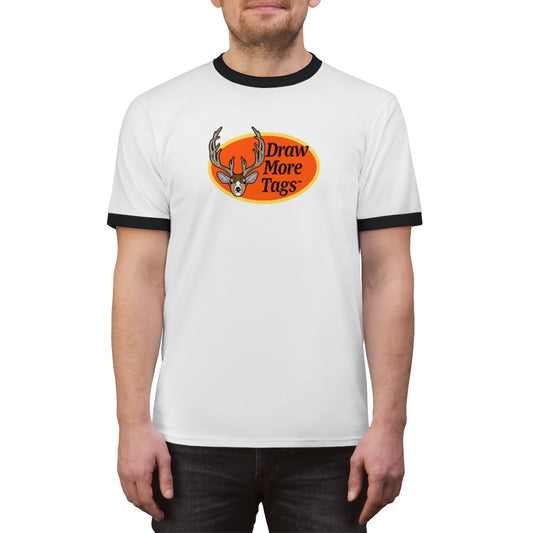BIG GAME HUNTING

WHAT IS A BIG GAME TAG
Hunting big game is regulated at the state level. In all states, hunting big game requires a hunting license and big game license or tag. Big game licenses are also commonly referred to as "tags". Some states conduct a big game draw, or lottery. In the many states that do offer a tag lottery, the big game "draw" has already happened for 2022, however there are a few remaining states that offer second chance draws or "over-the-counter" tag opportunities.
Big game tags are assigned to hunters based on simple rules of supply and demand. The number of animals that can be safely removed from the population of any particular species of big game without causing harm to the species population helps determine the amount of big game tags available in the state big game draw. Many state agencies in conjunction with federal wildlife agencies closely monitor herd populations and hunter success percentages to accurately calculate how many tags will be allocated to hunters for a particular species in a given hunting season.
States are divided into hunting units. Each state has a different layout and number of units available to hunt. In Nevada for example, the Nevada Department of Wildlife (NDOW), in conjunction with the Nevada Board of Wildlife Commissioners work together with biologist to determine the number of big game tags to issue in each hunting unit. When considering the amount of big game tags to issue, many factors are taken into account such as herd size, overall herd health, extreme drought conditions, loss of habitat from wildfires and urban growth, resource depletion from wild horses and many other contributing factors.
In the spring and again in the fall, typically during the rut, wildlife biologist conduct surveys to determine estimated animal populations in each hunting unit. Take mule deer for example, after the season has concluded, biologist again conduct surveys from the air to determine the ratio of bucks (adult male deer), does (adult female deer), and fawns (juvenile deer) that remain after the hunting season has finished. In the spring they take another survey to determine the ratio of adult deer to juvenile deer. This helps determine fawn survival rates after the harsh winter season.
In addition to biological data, NDOW also relies on harvest data provided by hunters after the hunting season has ended. Post-season hunting surveys provide valuable data including number of animals harvested, animal sex, age of animal, the size of the animal harvested, how many days the hunter spent in the field hunting, among other factors. After all the data is collected and analyzed, estimates of a particular hunting units herd sizes can be determined. Once the herd size is determined, biologist add the population estimate into a computer model that can then distribute the final quota of hunting tags to be issued for a particular unit. After the quotas become official, NDOW issues the tags to hunting applicants during the Nevada big game draw.
Nevada's big game draw process is similar to most other western U.S. states and based on a lottery that also takes into account the amount of "bonus points" a hunter has collected within a particular state. Each state holds its own big game draw, and bonus points in one state are not transferable to another state. The bonus point system was designed as a way to reward repeat hunters/customers. Every year, a hunter who does not draw a hunting tag is issued a bonus point for that species. There is an entire strategy around building up bonus points. The more bonus points a hunter has, the more likely they are to be actually drawn for the tag they applied.
A first year hunter who has never applied for a tag would have 0 bonus points to apply towards a particular draw. A hunter that has applied 10 years consecutively, and never drawn a tag for a particular species, would have 10 points to apply towards a tag in the 11th year of hunting. Depending upon the state, the more sought after the hunting unit is, the more points are required to draw a tag in that state. There are certain states that require more than 20 bonus points to draw a tag. That's 21 years of applying before finally being drawn. If you are at all considering becoming a big game hunter, the earlier you start applying for big game hunts, the better.
Each species of animal and each method of hunting (bow, rifle, handgun, muzzle-loader) applied for, yields a separate bonus point that can only be applied to a particular species, sex of animal, and method of harvest. For instance, a first year hunter that applied for a buck mule deer tag with a bow and was unsuccessful, would acquire a bonus point for ANTLERED ARCHERY MULE DEER. The same hunter may also acquire a separate bonus point for each separate species of animal applied for, if unsuccessful in the same draw for antlered mule deer, antlered archery elk, rifle antlered elk, archery antlerless deer, etc.
Big game preference points are also rewarded to big game tag applicants in many states. Each year the hunter applies and is unsuccessful in the draw, they gain a preference point. A major difference between bonus points and preference points is that preference point systems auto-allocate tags to the hunters who have accrued the most points. Allocation is awarded to the hunters with the highest points and trickles downward.
Big game preference points are also rewarded to big game tag applicants in many states. Each year the hunter applies and is unsuccessful in the draw, they gain a preference point. A major difference between bonus points and preference points is that preference point systems auto-allocate tags to the hunters who have accrued the most points. Allocation is awarded to the hunters with the highest points and trickles downward.
Many states do not hold annual big game draws. In states that have high populations of whitetail deer, often times over the counter or "OTC" tags are available. In states that offer "OTC" tags, any hunter can simply walk into their local sporting goods store and purchase an over the counter tag, and in most cases even purchase online. Utah, Idaho, and Colorado are examples of western states that offer an over the counter tag opportunity for elk. States like Illinois, Missouri, and Michigan also offer over the counter tag opportunities for whitetail deer.
In states where certain species of animals are more plentiful, while others may not be, the state may offer a hybrid model big game draw. In the state of Missouri, deer tags are issued OTC, but bear and elk tags are only issued via the big game draw lottery. States like Colorado and Idaho also offer a hybrid model where certain units offer OTC hunts, and other units may only be "limited entry". States like Colorado and Utah offer limited entry units. Limited entry hunting units typically offer the hardest draw odds, but the best odds for harvesting a trophy caliber animal once an applicant draws limited entry tag.
State residency is considered when applying for a big game tag. State residents are usually afforded top priority when the draw occurs. Certain states place a cap on the total amount of available big game tags awarded to non-residents. Once the non-resident cap is achieved, the rest of the tags go to the resident hunters. States like Colorado are more generous when allocating non-resident tag percentages, and states like Nevada and Montana are more conservative with their non-resident quotas.
Being successful in the big game draw requires, in some cases, a LOT of patience. There are some states that require 18 or more bonus points to fill a tag. As such, a lot of planning and strategy go into drawing big game tags. Many hunters spend weeks or months planning which units to even apply for. This does not include the time needed in the field scouting after the tag has drawn.
Within the preference points system, exists point creep. Point creep is when the number of hunters applying for a tag increases faster than the available tags for a given unit. In the past, hunters could determine roughly how many years it would take to draw a given tag. With point creep, it makes determining how many points is required to draw a big game tag more difficult because the data is dynamic, ever changing.
There is a significant financial investment involved in pursuing a species of animal that takes 20 preference points to draw a tag for. In most states, to acquire a bonus point, you must purchase a state hunting license. This can easily cost over 100 dollars per year. Also, in going after a coveted limited entry tag that requires 18 or more points to draw, means a hunter is passing up on other hunting opportunities that may be a sure draw. Many people give up on applying for the draw, before they even get started.
Many states such as Utah, and Colorado that have higher herd populations also offer a "second chance draw", or "leftover" tags for any tags that went undrawn, or tags that were abandoned. In addition to states like Nevada also offer raffles for coveted "once in a lifetime" hunt opportunities for species such as Nevada Bighorn Sheep.
Drawing a big game tag requires a lot of research, and in some cases a lot of time. Visit state fish and game websites where you are looking to hunt. Make yourself familiar with the regulations for each animal you wish to hunt. These sites are invaluable resources available to every person looking to plan their next big game hunt.
©Draw More Tags, LLC 2022
